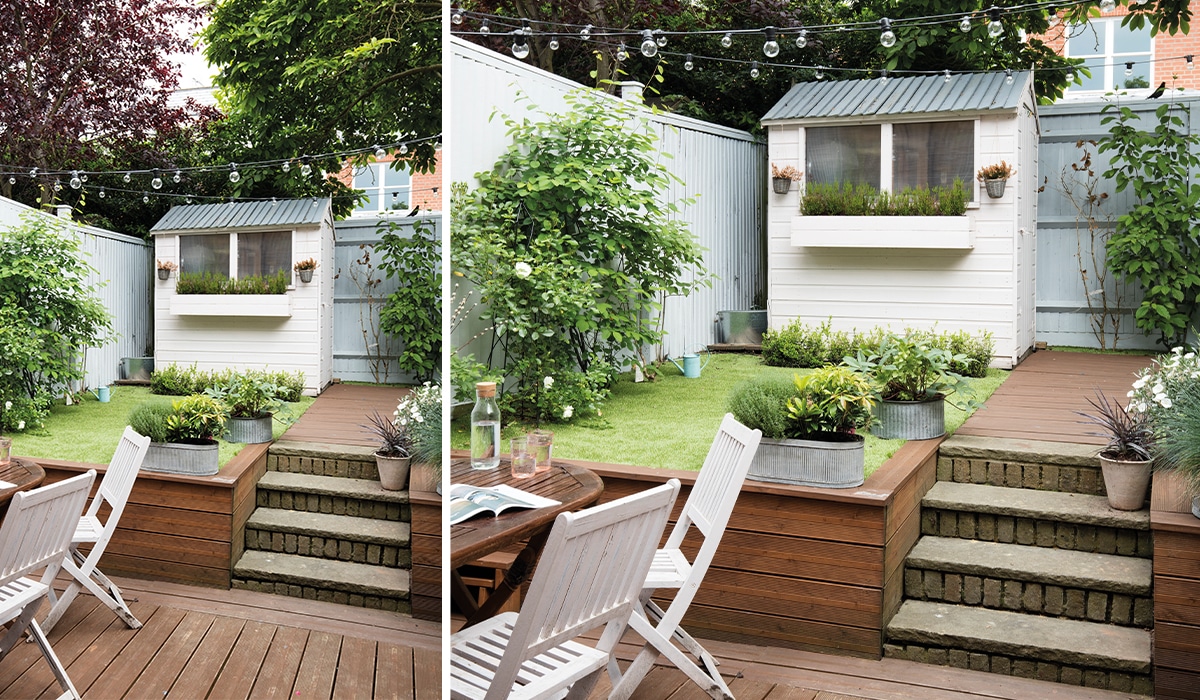Once you own a home, you need to keep it in tip-top shape — not only will this preserve its value, it will save you money in the long run.
Buying a home is one thing but keeping it in the best condition can seem like a different project entirely. A bit of peeling paint here, a loose board there – these things may not seem like a big deal in the moment, but it’s better to keep an eye on them instead of being surprised when the walls come crashing down all around you, literally. Regular maintenance also preserves the value of your home in the event that you sell it one day.
But even with the best of intentions, you can’t keep your home in shipshape if you don’t have the cash to fund it. You don’t want to find out water is pouring through your ceiling during the biggest storm of the year, nor do you want to have to foot a huge bill when it’s an emergency and you have no choice but to fix it. If you can, put away a little each month towards a maintenance fund so that when lightning strikes (so to speak) you can quickly get your home looking like new again. A good rule of thumb is to budget 1% of your home’s value annually for maintenance. For example, if you spent R1 million on your house, you should budget R10 000 a year for maintenance.

But there are a few cost-free checks that can save you money in the long run, if not time and effort, right now.
Clogged gutters can cause water to get into your home when it has nowhere to drain. Unblocking your gutters in the raging rain? Terrible idea. During the dry season, remove debris from the gutters, inspect the roof for loose tiles and check inside the space between the roof and ceiling to make sure that the waterproofing is intact. Check fascia boards for gaps and replace cracked, weathered ones – water can penetrate the roof if they’re not flushed. A few afternoon’s work will save you from a rude awakening at midnight!
While you’re at it, have a look around for dampness – and then deal with it immediately. If you notice that patches of paint near the floor are starting to flake or bubble, you may have a case of dampness, which can be difficult and expensive to fix. This is one problem that’s best nipped in the bud, fast. Do not attempt to fix it yourself. Call in a professional who will determine the source of the dampness and deal with it accordingly. This might involve chipping out a layer of plaster and adding a waterproof membrane to prevent it from recurring.
A good rule of thumb is to budget 1% of your home’s value annually for maintenance.
Also make sure to keep an eye on the source of many water-related disasters – your plumbing. A few leaking taps might not seem serious, but all that wasted water adds up. Replace washers to stop the drips and check under sinks in kitchens and bathrooms. If you find traces of water, don’t waste time in calling a plumber to make the necessary repairs. Puddles of water can warp kitchen cabinets if they’re made of chipboard, and if they are too far gone, they may need to be replaced entirely.
Also read: How to spruce up your home on a budget
It’s easy to get wrapped up in what’s going on inside your house, but don’t neglect your garden. It’s an extension of your home, so make sure to keep an eye out for any potential problems that could arise there too. Check any large trees for slowly rotting branches, especially if you’re expecting weeks of wind or stormy weather – the last thing you need is a branch crashing down on your house or car. If you do need to remove a large tree or a treacherous looking branch, get a professional to do it -tree felling is trickier than it looks! On the plus side, a dedicated garden contractor will remove any waste associated with the job, saving you a trip to the dump or the expense of paying someone else to take it away.
While you’re out there, stop by the pool and take the time to perfect caring for it yourself. If you have a pool, chances are you’ve already discovered how expensive it can be to get it’s sparkle back once it’s turned green. Skim the surface often to get rid of debris that might clog the filter and scrub the sides twice a month to prevent a build-up of algae. Empty the filter basket at least once a week in summer. In winter, cover the pool to prevent evaporation and keep it free of leaves that could cause blockages. Check chemical levels year-round – most pool shops will test a water sample for free.
See a chance to do a quick fix and get things running smoothly again.
On your way back inside, stop for a second to check out which creepy crawlys are scurrying about. Be on the lookout for insects that may be excavating under your foundations. For example, if you spot a trail of ants, follow it to its source and deal with it quickly. If your home has wooden floors, keep an eye out for borer beetles that can cause serious damage in a short space of time. Ignoring the signs may result in extensive repairs, which could easily cost more than what you will spend on pest control early on.
Though it may seem simple enough, the golden rule of maintenance – keeping an eye on things – can be easy to forget when life gets busy. Instead of seeing niggles, see a chance to do a quick-fix and get things running smoothly again. The maintenance matters for you and your peace of mind, after all.

The hole story
Borer beetles break down wood and play an important part in the clean-up of forests, but once they invade homes, they can become destructive. Here’s how to spot signs that you might have a beetle problem:
Fresh exit holes in timber:
The round or oval-shaped holes have sharp edges and will appear fresh.
Tunnels in the wood:
Known as ‘galleries’, beetles carve out these tunnels under the surface, which makes them hard to see.
Bore dust (also known as frass):
This is caused by emerging adult beetles, and is usually visible as a tiny pile of dust above the infested timber.
By: Lynda Ingham-Brown
Photographs: Getty







